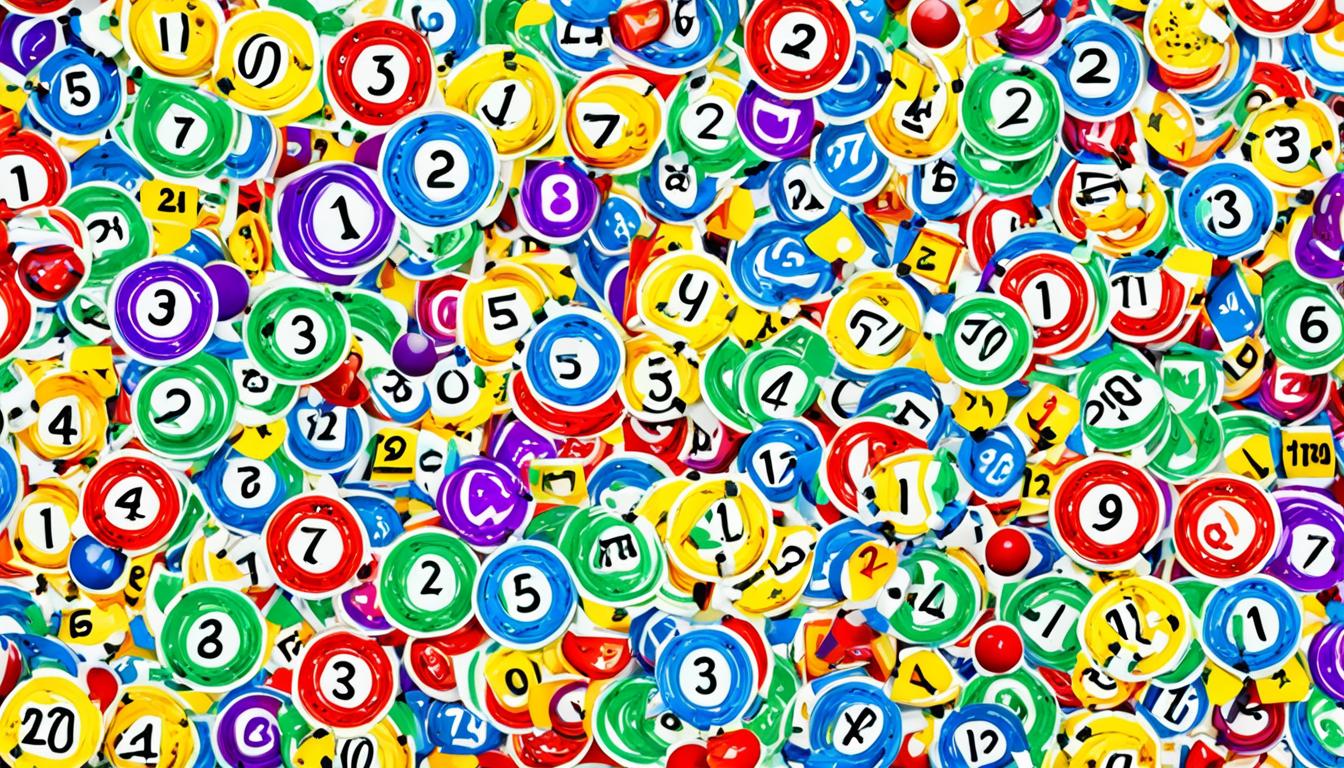Welcome to our quick guide on exploring the factors of 24! Factors are crucial components of mathematics, and understanding them can greatly enhance problem-solving abilities. In this guide, we will specifically focus on the factors of the number 24 and their significance.
Factors of a number are the whole numbers that divide evenly into that number. When it comes to the factors of 24, we will delve into various aspects such as divisors, factor pairs, and prime factors. By the end of this guide, you will have a solid understanding of the factors of 24 and how they can be applied to real-life scenarios.
Key Takeaways:
- The factors of 24 are the whole numbers that can be divided evenly into 24.
- The divisors of 24 are the factors that divide 24 without leaving a remainder.
- Factor pairs are two numbers that, when multiplied, yield the original number (in this case, 24).
- Prime factors are the prime numbers that divide evenly into 24.
- Understanding the factors of 24 can be applied to solve fraction problems, simplify ratios, find common multiples, and more.
What Are Factors?
In this section, we will explore the concept of factors and their relationship to the number 24. Understanding factors is crucial in solving mathematical problems efficiently. Factors are whole numbers that can be divided evenly into a given number.
Let’s delve into the factors of 24 specifically. The factors of 24 are the numbers that divide 24 without leaving a remainder. These divisors play a significant role in problem-solving and mathematical calculations.
| Divisors of 24 |
|---|
| 1 |
| 2 |
| 3 |
| 4 |
| 6 |
| 8 |
| 12 |
| 24 |
As you can see, the factors of 24 are 1, 2, 3, 4, 6, 8, 12, and 24. These numbers can be multiplied together to give us a product of 24.
Now that we have a clear understanding of factors and the divisors of 24, we can proceed to explore factor pairs and prime factors in the upcoming sections.
Identifying Factor Pairs of 24
In this section, we will dive deeper into factor pairs, which are two numbers that, when multiplied together, yield the original number. By identifying the factor pairs of 24, we can gain valuable insights into the factors that contribute to the number’s composition.
To find the factor pairs of 24, we need to explore all the combinations of factors that multiply together to equal 24. Let’s take a look at the factor pairs:
| Factor 1 | Factor 2 |
|---|---|
| 1 | 24 |
| 2 | 12 |
| 3 | 8 |
| 4 | 6 |
As you can see, these are all the factor pairs that multiply together to give the product of 24. By understanding these factor pairs, you’ll have a clearer grasp on the different ways that 24 can be composed.
Identifying factor pairs is crucial in various mathematical applications, such as finding common multiples or solving fraction problems. Now that you have a comprehensive list of factor pairs for 24, let’s move on to the next section, where we’ll explore the prime factors of 24.
Prime Factors of 24
Prime factors play a crucial role in understanding the factors of a given number, including 24. By definition, prime factors are prime numbers that divide evenly into a given number. In this section, we will explore the prime factors of 24, providing step-by-step instructions to help you determine these significant factors.
To find the prime factors of 24, we need to identify the factors of 24 first. As discussed earlier, factors are whole numbers that divide evenly into a given number, such as 24. The factors of 24 are:
1, 2, 3, 4, 6, 8, 12, and 24.
Now, let’s narrow down these factors to identify the prime factors of 24. Prime numbers are numbers that are only divisible by 1 and themselves without any remainder. Among the factors of 24, the prime numbers are:
- 2
- 3
Therefore, the prime factors of 24 are 2 and 3. These prime factors represent the prime numbers that divide evenly into 24, highlighting their significance in the prime factorization of 24.
Understanding the prime factors of 24 is essential when it comes to prime factorization and solving mathematical problems that involve the factors of 24. By recognizing these prime factors and their role, you can efficiently navigate through mathematical equations and calculations, simplifying complex problems.

Multiple Uses of Factors of 24
In addition to their mathematical significance, the factors of 24 have practical applications in various real-life scenarios. By understanding and utilizing the factors of 24, you can streamline calculations and solve problems more efficiently. Let’s explore some of the multiple uses of factors in everyday contexts:
Finding Common Multiples:
One of the key applications of factors is finding common multiples. Factors of 24 can help identify numbers that are divisible by both 24 and another given number. For example, if you need to find the smallest number divisible by both 24 and 10, you can analyze their common factors (2 and 5) to determine that the common multiple is 120.
Solving Fraction Problems:
Factors of 24 can also aid in solving fraction problems. When dealing with fractions, finding a common denominator is essential for adding or subtracting them. By identifying the factors of 24, you can quickly determine a common denominator to simplify computations.
Simplifying Ratios:
Ratios are a fundamental concept in mathematics and can be simplified by dividing both parts by their greatest common factor. In the case of ratios involving factors of 24, knowing the factors can simplify calculations and make comparisons more manageable.
These are just a few examples of how factors of 24 can be applied in practical situations. By recognizing the value of factors and their role in problem-solving, you can enhance your mathematical skills and improve efficiency in various scenarios.
In the next section, we will guide you step-by-step on how to find the factors of 24, enabling you to explore their full potential in different mathematical contexts.
Finding Factors of 24
Calculating the factors of a number is key to solving mathematical problems efficiently. In this section, we will provide you with a step-by-step guide on how to find the factors of 24. By understanding this process, you will be equipped with the tools to find factors not only for 24 but also for other numbers effortlessly.
To find the factors of 24, follow these simple steps:
Step 1: Start with 1 and 24
Begin by listing the numbers 1 and 24, as these are always factors of any number.
Step 2: List Divisors
Next, identify the other divisors of 24. These are the numbers that divide 24 evenly without leaving a remainder. In the case of 24, the divisors include 2, 3, 4, 6, 8, and 12.
Step 3: Identify Factor Pairs
Now, pair up the divisors to find the factor pairs of 24. The factor pairs of 24 are:
- 1 and 24
- 2 and 12
- 3 and 8
- 4 and 6
These factor pairs are crucial in understanding the factors of 24 and how they relate to each other.
By following these steps, you can easily find the factors of 24 and explore the relationships between them. Experiment with different numbers and practice this systematic approach to calculate factors. This knowledge will empower you to excel in various mathematical calculations and problem-solving scenarios.
Now that you have learned how to calculate the factors of 24, let’s move on to the next section, where we will explore the prime factors of 24.
Prime Factorization of 24
Prime factorization is an essential concept in mathematics that allows us to break down a number into its prime factors. By combining the prime factors we have discovered earlier, we can determine the prime factorization of 24.
To find the prime factorization of 24, we start by listing the prime factors we found in Section 4. The prime factors of 24 are 2 and 3. Now, we examine how these prime factors can be combined to obtain the original number.
24 = 2 × 2 × 2 × 3
As shown in the equation above, we can express 24 as the product of the prime factors 2 and 3. Each prime factor is repeated based on its frequency in the factorization. In this case, the number 2 appears three times, while the number 3 appears once.
Visually, the prime factorization of 24 can be represented in table form:
| Number | Prime Factorization |
|---|---|
| 24 | 2 × 2 × 2 × 3 |
Understanding the prime factorization of 24 allows us to express the number in its simplest form, composed only of prime factors. This knowledge can be used to solve various mathematical problems and simplify calculations involving factors of 24.
Now that we have explored the prime factorization of 24, we can move forward and discuss the multiple uses of factors of 24 in Section 5.
Conclusion
Throughout this article, we have dived deep into the fascinating world of the factors of 24. By understanding the factors of 24, we gain valuable insights into mathematical problem-solving, unlocking a variety of applications and implications.
Our exploration began by defining factors and discussing their relevance to the number 24. We then delved into identifying factor pairs of 24, uncovering all possible combinations of factors that multiply together to equal 24. Additionally, we explored the prime factors of 24, discovering the prime numbers that divide evenly into 24.
By grasping the factors of 24, we can solve a plethora of mathematical problems more efficiently. Whether it’s finding common multiples, simplifying ratios, or tackling fraction problems, this knowledge proves invaluable in real-life scenarios. Armed with the ability to calculate factors of 24 and understand prime factorization, readers are equipped with powerful tools for mathematical problem-solving.
In conclusion, the factors of 24 open doors to enhanced problem-solving abilities. By applying this knowledge across different contexts, readers gain confidence and proficiency in their mathematical endeavors. So, embrace the factors of 24, unlock their potential, and elevate your mathematical prowess.
FAQ
What are factors?
Factors are the whole numbers that can be divided evenly into a given number. For example, the factors of 24 are 1, 2, 3, 4, 6, 8, 12, and 24.
What are the divisors of 24?
The divisors of 24 are the numbers that divide 24 without leaving a remainder. In the case of 24, the divisors are 1, 2, 3, 4, 6, 8, 12, and 24.
How do I identify factor pairs of 24?
Factor pairs of 24 are two numbers that, when multiplied together, yield 24. To find the factor pairs of 24, you can list all the combinations of factors that multiply to 24. For example, the factor pairs of 24 are (1, 24), (2, 12), (3, 8), and (4, 6).
What are the prime factors of 24?
Prime factors are the prime numbers that divide evenly into a given number. The prime factors of 24 are 2 and 3. This means that 24 can be represented as a product of primes: 2 × 2 × 2 × 3 = 24.
How can I use factors of 24 in everyday situations?
Factors of 24 can be used to find common multiples, solve fraction problems, simplify ratios, and more. For example, if you have two fractions with 24 as their denominator, you can simplify them by dividing both the numerator and denominator by a common factor of 24.
How do I find factors of 24?
To find factors of 24, you can use a systematic approach. Start by dividing 24 by 1 and check if the division is exact. If it is, 1 is a factor of 24. Then, divide 24 by 2, 3, 4, and so on, checking for exact divisions each time. The process continues until you reach the square root of 24 or the number itself. The factors of 24 are 1, 2, 3, 4, 6, 8, 12, and 24.
How do I determine the prime factorization of 24?
To determine the prime factorization of 24, you can use the prime factors you found earlier, which are 2 and 3. By repeatedly dividing 24 by 2 and 3, you obtain the prime factorization: 2 × 2 × 2 × 3 = 24.










